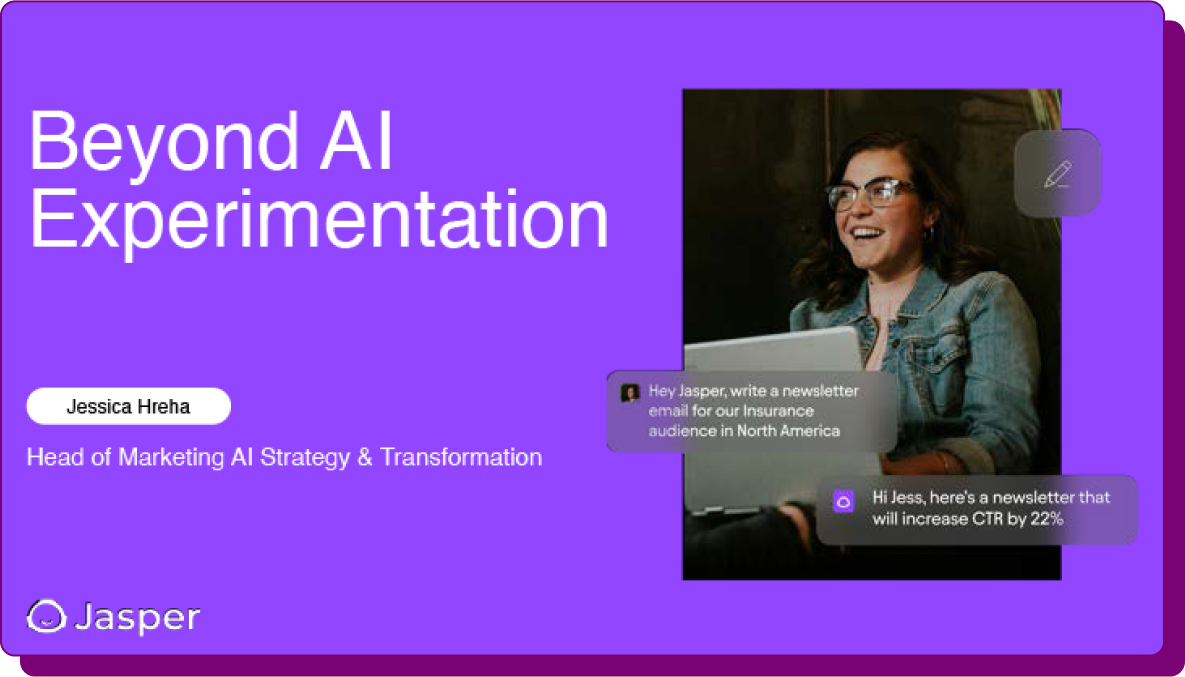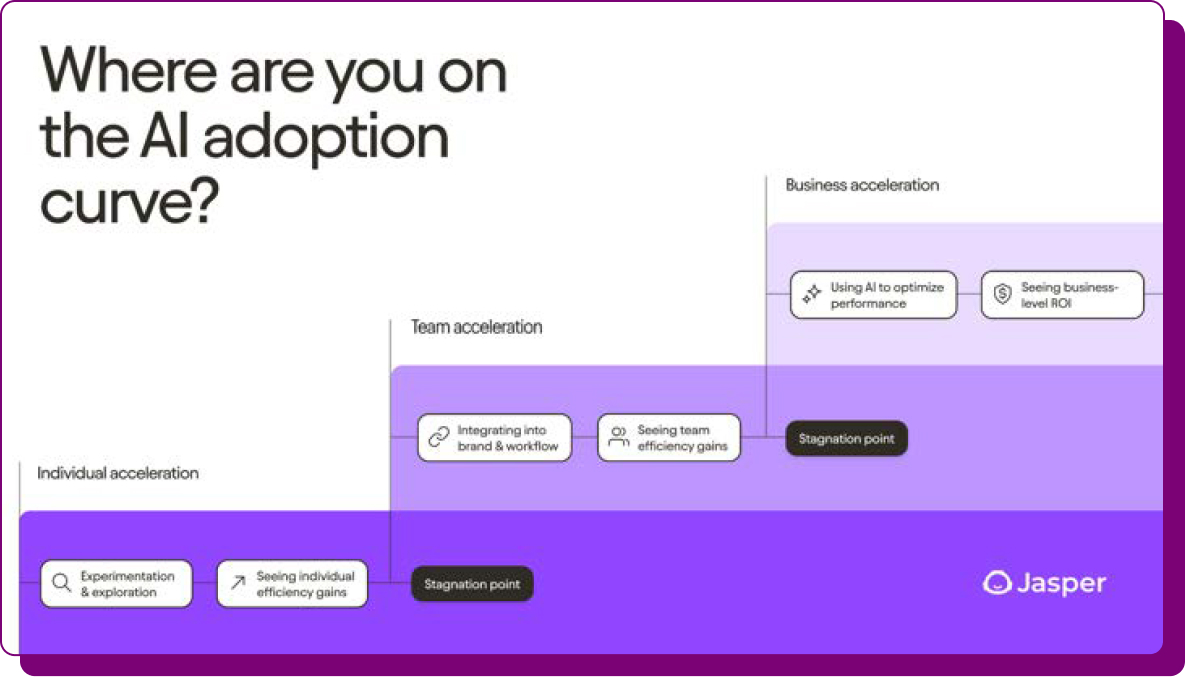This content is for members only
Supercharge your native advertising campaign
As a member of the Native Advertising Institute you will have access to the tools you need to win in native advertising.
Beyond AI Experimentation: How to Lead the Marketing Transformation Like a Bad*ss
Jessica Hreha’s insightful presentation on AI adoption during this the 2024 Native Advertising Days highlighted the challenges and opportunities organizations face when implementing AI technology. In this talk she explored the essential role of leadership, hands-on experimentation, and cross-functional collaboration in accelerating AI adoption and driving meaningful business transformation.
The Importance of Action Over Theory
In today’s rapidly evolving AI landscape, many organizations are stuck in a cycle of conversations about AI without taking meaningful steps toward implementation. While AI dominates business discussions, few companies have moved from talking about it to experimenting with its potential. Jessica Hreha emphasized that progress requires more than just conversations—it requires action. She called for individuals within organizations to step up as AI champions, sparking transformation through small-scale initiatives like pilot projects. Even minor efforts, such as setting up a cross-functional team, can create momentum for larger organizational change.

Hreha stressed that hands-on experience with AI is critical to understanding its true potential. Many companies fail to fully adopt AI because leadership lacks practical exposure to its applications. Those who take the initiative to experiment with AI tools not only learn by doing but also have the opportunity to inspire others within the organization. By stepping up and leading these efforts, AI champions can bridge leadership gaps and drive cultural shifts toward innovation. One person willing to take action can light the spark that accelerates change and empowers an entire organization to embrace AI.
The AI Adoption Curve
Jessica Hreha outlined a clear path for AI adoption within organizations, starting with individual productivity improvements and progressing to full-scale business integration. In the initial phase, known as individual acceleration, AI is used by individuals—often content creators—to streamline tasks like writing blog posts or improving workflow speed. The next stage, team acceleration, involves embedding AI into broader team processes, such as incorporating AI into editorial workflows and ensuring content aligns with brand guidelines. The final stage, business acceleration, occurs when AI’s generative capabilities are combined with machine learning and data analysis to continuously optimize performance and drive revenue improvements across the organization.

However, many companies stall in the early stages of adoption, often struggling to move beyond individual usage to team-wide or business-wide integration. This stalling happens because a strategic shift and strong leadership are required to push AI adoption further. Hreha highlighted the need for AI champions who can guide their organizations through this shift, helping teams embrace AI beyond personal productivity gains and into areas that impact the entire business. Those companies that achieve business acceleration can harness AI to drive substantial business impact by leveraging AI to analyze data, identify trends, and implement strategies for continuous performance improvement.
Building a Strong AI Leadership Team
To successfully drive AI adoption, Jessica Hreha emphasized the importance of forming cross-functional AI councils or task forces within organizations. These teams, comprised of AI enthusiasts from various departments, play a crucial role in tackling AI-related challenges and ensuring that AI strategies are cohesive and aligned with business goals. AI councils operate outside of the traditional hierarchy, allowing them to be more agile and focused on accelerating AI adoption across the organization. Members of these teams should be empowered with authority and expertise, helping to lead the charge toward AI-driven transformation.

An essential component of this process is securing executive sponsorship, such as from a CMO or CTO, to lend credibility and resources to AI initiatives. Executive backing not only speeds up decision-making but also ensures that AI efforts gain visibility at the highest levels of the company. Beyond leadership, fostering a culture of AI literacy is critical to success. Organizations must provide employees with the training and resources they need to experiment with AI in a safe and collaborative environment. By promoting open discussions, sharing best practices, and building a community of AI enthusiasts, companies can create a vibrant ecosystem that encourages innovation and continuous learning in the AI space.
Wrap-up
In a rapidly advancing AI landscape, organizations must move beyond conversations and take action to lead AI-driven innovation. By building strong AI leadership teams, fostering a culture of learning, and securing executive support, companies can unlock AI’s potential and position themselves for long-term success.
 Jessica Hreha
Jessica Hreha





















